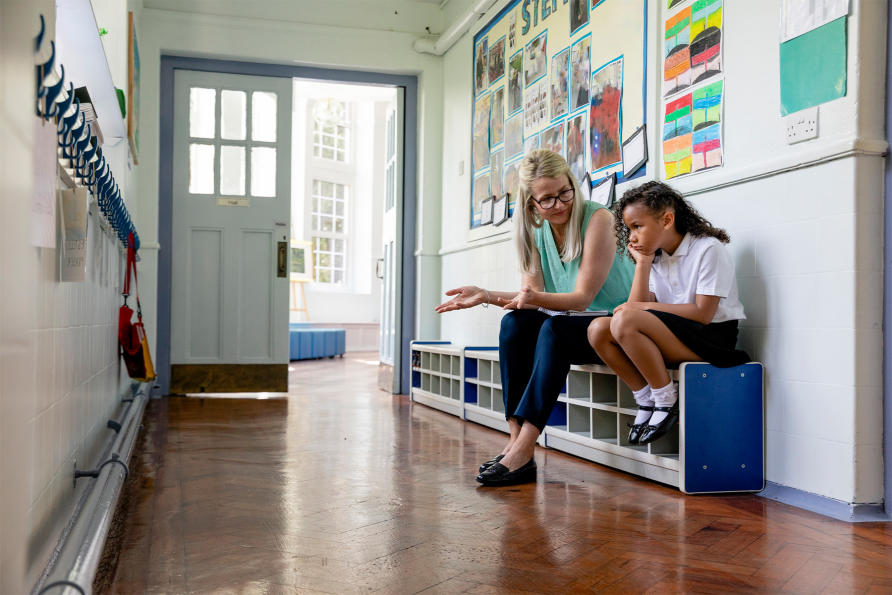
23 Jan Blind faith in Australia’s education ‘system’ is failing our kids
To improve Australia’s education system, we need to move away from the idea that the basic features of education are fixed, writes Professor John Quay
Have you heard of ‘Flat-Earth education’? It’s a phrase I am using as a provocation to highlight a problem – the unquestioning acceptance of the everyday structures and practices of education, including education research.
Unquestioning acceptance suggests blind faith, the consequences of which play out in continuing concerns over student performance and the working lives of teachers.

“Education is flat” might be a claim made by those, I will call them ‘flat educationers’ (akin to flat earthers), who consider the landscape of education to be, in its basic features, fixed.
For flat educationers, education is these features: students and teachers, subjects and year levels.
Most of us have attended some form of school, and through this experience we share an understanding of what education is and how it works. But this creates an unconscious bias.
We lived this experience as students, gradually moving through school as if climbing a long and well-worn staircase, each flight a year level, surrounded by other students, coaxed and prodded (perhaps led) by teachers.
Every individual step on this staircase was an achievement, often an assessment task as part of one of the many subjects we encountered.
Embedded in this analogy are those very basic structural features of education: students and teachers, subjects and year levels.
The presence of these ubiquitous features is rarely questioned. They are bound together in a fateful bargain sketched out by an overarching narrative: the curriculum.
The curriculum – not just its content but as a connecting narrative – is the established source of authority. Much is invested nationally in sustaining its rise and supremacy. The main characters are, again, students and teachers, subjects and year levels.

The moral of the curriculum story is a firm message about how to conduct one’s life as a student or learner; and for the educators among us, as a teacher.
Many current day flat earthers push against other sources of authority from an identity-driven position, and flat educationers have the curriculum story as their identity, or ‘bible’ of sorts.
Armed with this narrative, flat educationers rail against attempts to question the authority of the curriculum. And further, they strengthen adherence to this narrative by all manner of measures designed to illuminate how well students are being students (and teachers are being teachers), like the fabled PISA testing regime.
The curriculum story told by PISA works neatly in very specific and contained circumstances, as the PISA results from China and Singapore attest: these are bubbles which exclude broader concerns.
In China, PISA testing only occurs in the wealthiest areas – so selection skews the results; in Singapore, student streaming has been a mainstay of educational policy and practice for decades – and again, selection skews the results.
When the PISA test is applied with less selection in play, 2022 results “point to a clear global trend: average student performance in these subjects [tested by PISA] is heading in the wrong direction,” says Andreas Schleicher, who oversees PISA at the OECD.
With this broader application, PISA conveys a different message: that the curriculum narrative isn’t adequate to achieving the broader aims of education claimed by most politicians and argued for by education experts.
In Australia, the two primary goals of education are (1) the Australian education system promotes excellence and equity, and (2) all young Australians become confident and creative individuals, successful lifelong learners, as well as active and informed members of the community.

These goals are not foundational to the curriculum narrative. Descriptions of these goals contain scant mention of education’s structural features. Addressing this severe misalignment requires more than a garden makeover – the landscape itself needs to be remade.
The profound inadequacy of the curriculum narrative is spotlighted during eruptions of agency. Prominent among these is the growing cohort of school refusers, many of whom feel excluded by an education system failing to meet their needs.
Amplifying this disconnect are public protests by young people, concerned with wars and climate change, that challenge the moral of the curriculum story, much to the chagrin of politicians.
Yet these waves of urgency – pleas to be heard and included – break impotently against the structural features buttressing the curriculum narrative. “If you want to change the world, go to school,” retorts our Federal Minister for Education.
Like most of us, the Minister is a product of the curriculum narrative, using it to push against other sources of authority. Flat educationers believe that if there are problems with education, they stem from people not adhering to the curriculum narrative closely enough.
Getting past our education problems demands focusing on research that exposes the deep-seated lack of vision by interrogating the structural features of the curriculum narrative.
This involves challenging what we take for granted when we use the words ‘student’ and ‘teacher’, ‘subject’ and ‘year level’, to enable exploration of new ideas.

This kind of education research is not immediately empirical, collecting evermore data as evidence of adherence or non-adherence to the curriculum narrative.
Instead, it is primarily conceptual, challenging ideas and assumptions and generating alternative frameworks.
This impacts how we determine the relevance of education research. At the same time, it necessitates opening ourselves up to recognising and admitting that the curriculum foundation story we currently adhere to is flawed; it is a mirage.
Education is anything but flat.
Professor John Quay is a Professor in Physical Education, Faculty of Education, University of Melbourne
This article was first published on Pursuit. Read the original article



